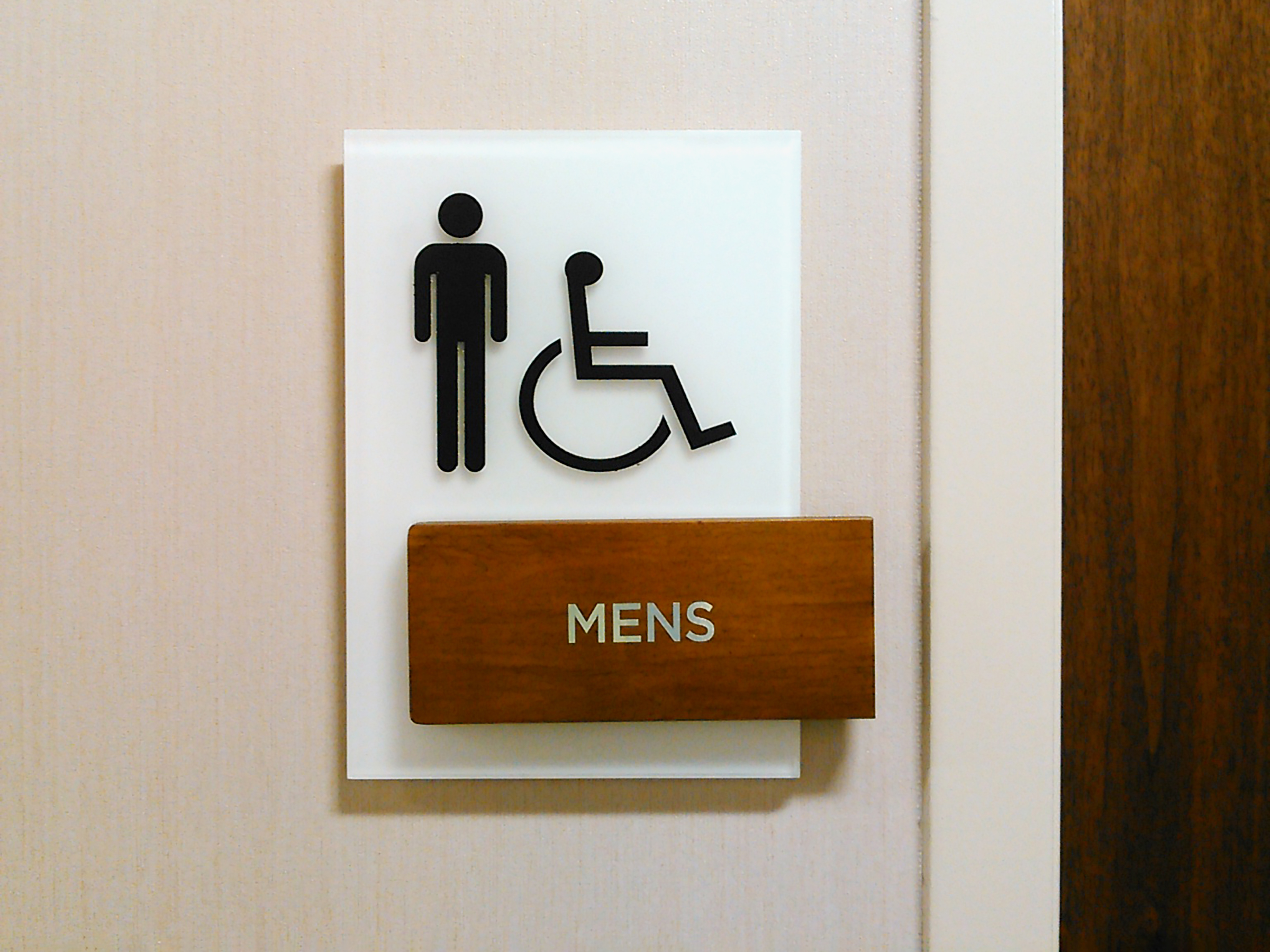The Impact of ADA Signs on Area Access
The Impact of ADA Signs on Area Access
Blog Article
Checking Out the Secret Attributes of ADA Indications for Enhanced Ease Of Access
In the realm of access, ADA indications serve as silent yet effective allies, guaranteeing that rooms are navigable and comprehensive for people with handicaps. By integrating Braille and responsive components, these signs damage barriers for the aesthetically damaged, while high-contrast shade systems and legible typefaces cater to varied visual requirements.
Significance of ADA Conformity
Making sure compliance with the Americans with Disabilities Act (ADA) is vital for cultivating inclusivity and equal accessibility in public areas and workplaces. The ADA, established in 1990, mandates that all public facilities, employers, and transport solutions fit people with handicaps, ensuring they delight in the very same legal rights and chances as others. Conformity with ADA criteria not only fulfills lawful commitments yet also enhances a company's reputation by demonstrating its commitment to diversity and inclusivity.
One of the vital elements of ADA compliance is the implementation of available signs. ADA indications are designed to ensure that people with handicaps can conveniently browse via buildings and areas.
Moreover, sticking to ADA guidelines can alleviate the risk of possible fines and lawful effects. Organizations that stop working to abide by ADA standards may face suits or charges, which can be both monetarily burdensome and destructive to their public picture. Therefore, ADA conformity is essential to cultivating an equitable setting for every person.
Braille and Tactile Aspects
The unification of Braille and tactile components into ADA signage symbolizes the concepts of access and inclusivity. It is typically positioned beneath the corresponding text on signage to ensure that people can access the details without aesthetic aid.
Responsive elements extend past Braille and consist of increased personalities and signs. These components are developed to be discernible by touch, permitting individuals to identify area numbers, bathrooms, leaves, and various other important locations. The ADA establishes particular guidelines relating to the dimension, spacing, and placement of these responsive aspects to enhance readability and guarantee consistency across different settings.

High-Contrast Color Schemes
High-contrast color design play a pivotal duty in improving the visibility and readability of ADA signs for individuals with aesthetic disabilities. These systems are vital as they maximize the distinction in light reflectance between message and background, making sure that signs are conveniently discernible, also from a distance. The Americans with Disabilities Act (ADA) mandates the usage of particular color contrasts to fit those with restricted vision, making it an essential facet of compliance.
The efficiency of high-contrast shades depends on their capability to attract attention in different lights conditions, consisting of dimly lit settings and locations with glare. Commonly, dark message on a light history or light text on a dark background is used to attain ideal comparison. For instance, black text on a yellow or white history offers a stark aesthetic distinction that assists in quick recognition and comprehension.

Legible Fonts and Text Dimension
When considering the design of ADA signage, the option of readable typefaces and suitable text size can not be overstated. These elements are critical for ensuring that indications are available to people with aesthetic problems. The Americans with Disabilities Act (ADA) mandates that typefaces should be not italic and sans-serif, oblique, manuscript, very attractive, or of uncommon type. These needs aid ensure that the text is conveniently legible from a range which the personalities are distinct to varied audiences.
According to ADA guidelines, the minimal text height must be 5/8 inch, and it needs to raise proportionally with watching range. Consistency in message size contributes to a natural aesthetic experience, helping people in browsing atmospheres effectively.
Moreover, spacing in between lines and letters is integral to readability. Sufficient spacing prevents personalities from appearing crowded, improving readability. By their website sticking to these standards, designers can dramatically improve accessibility, ensuring that signage serves its desired objective for all individuals, despite their visual capabilities.
Effective Placement Approaches
Strategic placement of ADA signage is crucial for maximizing availability and ensuring compliance with legal criteria. Correctly located indicators direct individuals with specials needs effectively, facilitating navigation in public areas. Trick factors to consider include distance, presence, and elevation. ADA guidelines specify that indicators should be installed at an elevation in between 48 to click for info 60 inches from the ground to guarantee they are within the line of sight for both standing and seated people. This conventional height array is vital for inclusivity, making it possible for mobility device customers and people of differing elevations to access information effortlessly.
Additionally, indicators should be placed nearby to the lock side of doors to enable very easy recognition prior to access. Consistency in indicator positioning throughout a facility improves predictability, decreasing complication and improving overall user experience.

Verdict
ADA signs play an essential role in promoting accessibility by incorporating attributes that deal with the demands of people with handicaps. These components jointly cultivate an inclusive setting, underscoring the significance of ADA conformity in guaranteeing equivalent gain access to for all.
In the world of availability, ADA indications offer as quiet yet effective allies, making certain that spaces are inclusive and navigable for individuals with disabilities. The ADA, enacted in 1990, mandates that all public facilities, employers, and transport solutions accommodate individuals with specials needs, guaranteeing they check my site appreciate the exact same civil liberties and possibilities as others. ADA Signs. ADA indications are made to make certain that people with handicaps can easily browse via rooms and structures. ADA guidelines specify that indicators need to be installed at a height in between 48 to 60 inches from the ground to ensure they are within the line of sight for both standing and seated people.ADA indications play a crucial function in promoting accessibility by integrating attributes that attend to the needs of individuals with handicaps
Report this page